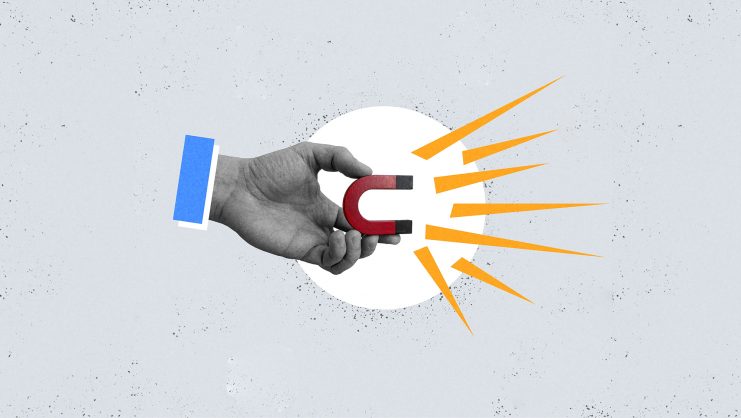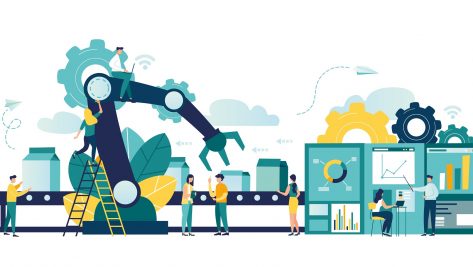Career development unfolds differently in innovative work environments than it does in traditional work environments, which are characterized by a limited classification of tasks, ascending and descending channels for communication and control, and a rigid hierarchical structure. Innovative work environments are characterized by two fundamental factors: the adoption of high-involvement work practices (HIWPs)—practices that require employees to make decisions that were previously made only at higher levels of the company—and the delayering of the company’s organizational structure.
How do these factors affect employees’ chances of promotion within the company? Contrary to what one might expect given the flatter organizational structure, participation in HIWPs is positively correlated with opportunities for in-house promotion. This fact can be explained in part by the new competencies that employees acquire through HIWPs, not only because companies that adopt these practices tend to provide more formal training but also because workers acquire technical and interpersonal competencies by getting more involved in their jobs.
Line managers’ chances of promotion increase rather than decrease, suggesting that they, too, benefit from these practices and should not fear the introduction of new management models.
Effects: a question of supply and demand
One way of understanding how this new environment affects a company’s possibilities is to consider the implications for both supply and demand. Supply-related considerations refer to the quality of the pool of potentially promotable employees, while demand-related considerations refer to the organization’s promotion needs.
On the supply side, HIWPs can have a positive effect on individual characteristics that are known to play a determining role in promotion within a company. Examples of HIWPs—which require employees to play a larger role in the organization’s decision-making and problem-solving—include working in self-managed teams, participating in the negotiation of work-related matters with colleagues, and making suggestions about how to increase productivity at work. Individuals who participate in HIWPs must do technical work, make decisions, and take part in human-resources tasks, such as recruiting members for their teams and keeping records that, in a traditional system, would be handled by their supervisors or immediate superiors.
In order to effectively meet the requirements of their increased responsibility, these lower-level employees need to acquire greater human capital in the form of new technical and behavioral skills in areas such as communication, incident management and group dynamics. The company can meet these needs either by hiring better-qualified employees or by providing more training. In addition, employees involved in HIWPs can develop skills that they would not have a chance to develop in a more traditional position.
On the demand side, the adoption of a flatter hierarchy could be expected to reduce a company’s need to promote its employees. For one thing, there may be fewer job openings. Moreover, in this new type of work environment, positions at the highest levels entail new responsibilities. The question of whether these positions can be filled internally by promoting lower-level employees or if the company must resort to external hiring depends on the “skills gap” between the highest and lowest levels and on the learning opportunities generated by the new practices.
Interpersonal skills are the most likely to make a difference in an individual’s chances of promotion.
Occupational differences
But how do HIWPs affect each individual’s chances of promotion within the company? Clearly, the impact of HIWPs on promotion opportunities through changes in the organizational hierarchy varies depending on where one’s occupation falls within the company.
For employees in jobs below the level at which delayering has taken place, it seems likely that the chances of promotion would decrease, whereas the effect on the people at higher levels might be smaller. However, decentralized decision-making can also affect managers because some of their responsibilities are passed down to lower-level employees. In fact, the strongest opposition to the introduction of HIWPs is voiced by the supervisors and managers who see their responsibilities being “eroded” and perceive this change as a threat to their survival in the company. Experience shows that these positions do, in fact, continue to exist. However, these employees must be retrained because, although their responsibilities do not decrease, they do change.
What effects do we find?
Generally speaking, individuals who take part in high-involvement systems see their chances of promotion increase, but the effects vary from one occupation to the next. Employees in positions typically associated with the lowest categories of the company hierarchy—as well as their supervisors—have greater expectations of promotion than employees in other professions, such as technical specialists and managers. The most immediate explanation may be that the jobs of technical specialists and managers already involve many of the characteristics of HIWPs; in other words, their positions do not change all that much. Analyses also show that some of these positive effects can be explained by a higher skill level among employees, in part because companies tend to increase their selection criteria for new hires and in part because employees who participate in HIWPs acquire attributes and engage in behaviors that make them good candidates for promotion. However, these factors do not appear to be the only explanation.
What other explanation is there? Perhaps a less obvious reason is that unlike traditional jobs, positions characterized by HIWPs give employers a chance to observe aspects of workers that could be crucial at higher levels of the organization, thereby increasing the number of candidates for in-house promotion. For example, when supervisors ask employees to make decisions, they can see which individuals are the most proactive and tend to exhibit the most leadership. In other words, HIWPs put the spotlight on candidates who may have gone unnoticed in a traditional model.
High-involvement work practices give employers a chance to observe aspects of workers that could be crucial at higher levels of the organization.
Interpersonal skills
Of all the new techniques developed, those having to do with behavior—interpersonal or “soft” skills—are the most likely to make a difference in an individual’s chances of promotion. Studies of management competencies have concluded that interpersonal skills increase in importance as one ascends within the organizational hierarchy. To the extent that HIWPs foster these skills, they expand the pool of candidates for promotion. It has been argued that the high degree of autonomy that employees acquire through HIWPs leads to an increase in proactive behavior.
It is clear that companies meet their needs for new skills and competencies in high-involvement jobs by providing training for their employees. Informal learning can be another way to develop new skills, and autonomy seems to encourage this practice at work. Finally, it should be noted that companies can change their selection criteria to include procedures that take newly acquired competencies into account.
© IE Insights.











